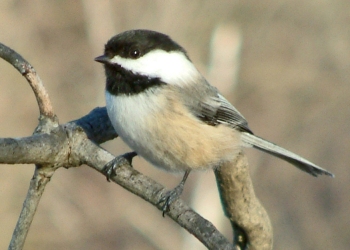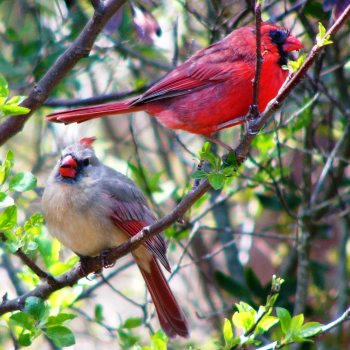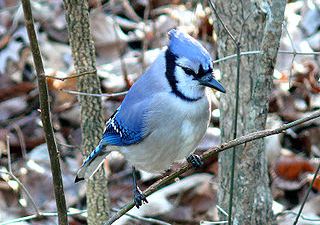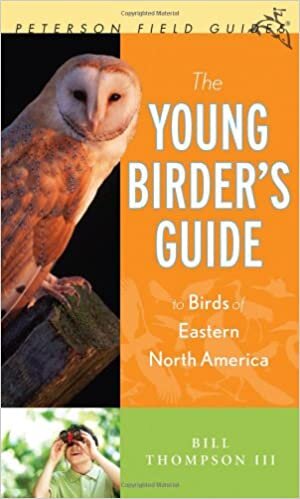Bird Watching For Beginners
When my husband and I bought our house in the 'burbs, one of the first things we did was put up a bird feeder. This was long before I worked for Mass Audubon, and at the time I knew very little about birds. But I quickly fell in love with watching them come and go from our feeder. Once my daughter came along, it didn't take long for her to also become enamored. By the age of two, she could identify our most common visitors. I soon realized that bird watching is perhaps one of nature's best games. It challenges our powers of observation, it can be done almost anywhere, and every time you play you discover something new. And while it may seem intimidating (after all there are over 300 species that can regularly be found in the state), getting started is actually pretty easy if you know what the most common backyard birds are and which tools of the trade to procure.
Common Backyard Birds
Black-capped Chickadee
The Massachusetts state bird has a black cap, white cheeks, black throat, and an easy-to-remember call "chick-a-dee-dee-dee."

Tufted Titmouse
Named for the spiky tuft of feathers on its head, this grey bird with a white belly and rusty-orange flanks can be often heard singing a rapid "peter, peter, peter."

Northern Cardinal
The male cardinal is perhaps one of the easiest birds to ID thanks to its brilliant red body, pointy crest, and orange triangular beak surrounded by black feathers. Where there's a male, there's usually a female nearby, but the ladies sport a brown body with red highlights.

Blue Jay
If you hear a squawky "theef, theef," chances are it's a blue jay. One of the larger birds that will visit a feeder, blue jays have blue, white, and black bodies with a black ring around their necks. In addition to seed, they're also fans of acorns and peanuts.

American Robin
Don't look at the feeders for robins. These medium-sized birds with an orange-red breast and a dark grey head/back are more often found hopping around lawns searching for tasty worms.

Tools of the BIRD WATCHING Trade
Bird feeder
You can buy a bird feeder or make one yourself. To keep the squirrels at bay, place it in the middle of a large window away from trees, so the little rascals can't climb up the side of the house and jump into the feeder.
Seed
The best seed to attract these birds is black-oil sunflower seed. If you're worried about a mess, you can purchase just the sunflower hearts, but they're more expensive.
Field Guide
It's always handy to have a bird field guide near the feeder. Two good picks are The Sibley Field Guide to Birds of Eastern North America and The Young Birder's Guide to Birds of Eastern North America (Peterson Field Guides).
Image credits: Individual bird images above provided to Boston Mamas by Mass Audubon. 1) Tufted titmouse by Mia Kheyfetz (Mass Audubon); 2) Black-capped chickadee by Joy Marzolf; 3) Cardinal by Richard Johnson; 4) Blue jay by Ken Thomas (Mass Audubon); 5) Robin by Joy Marzolf. Additional blue jay image in composite below via Unsplash. This post was originally published April 12, 2012.
Common backyard birds and how to attract them



